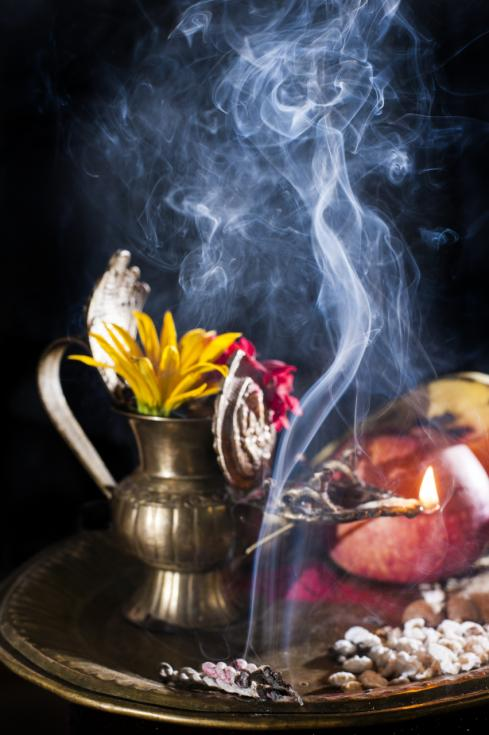Widowhood was like a contagious disease” is part of the storyline in A Widow’s Gift, Shanti Mishra’s praiseworthy first novel. As the book opens, Radha, a Brahmin girl child, is married to a young man. But, “Whereas a boy is regarded as an asset to his parents, who expect him to look after them in their old age and to perform rituals on their death..., a girl is always regarded as a burden.” Overcoming that burden is the key to Radha’s story. When her youthful husband unexpectedly dies, Radha’s life is fundamentally redefined. Thereafter she suffers the “disease” of widowhood, as a debilitating burden, painful to heart and soul. Mishra captures these sentiments well, alongside those of love and affection that define Radha’s life. It is Radha’s development as a caring person despite her cultural “disease” that is the theme of the book.
 From the first page, Radha’s story reveals daily life in a strict Brahmin society, including the near curse-like restrictions on widows. But Radha as a girl, and in time as a stalwart woman, perseveres and sets an example for all by her generous outgoing nature. The story moves along quickly, there are no slow parts. Yet, the author is able to provide great detail about the richness of Brahmin culture. It is unusual in works of fiction to see footnotes, but Mishra uses them to good effect, unobtrusively, to explain to non-Hindu readers some of Hinduism’s key social and ritual concepts.
From the first page, Radha’s story reveals daily life in a strict Brahmin society, including the near curse-like restrictions on widows. But Radha as a girl, and in time as a stalwart woman, perseveres and sets an example for all by her generous outgoing nature. The story moves along quickly, there are no slow parts. Yet, the author is able to provide great detail about the richness of Brahmin culture. It is unusual in works of fiction to see footnotes, but Mishra uses them to good effect, unobtrusively, to explain to non-Hindu readers some of Hinduism’s key social and ritual concepts.
There are many moments of reflection in this story. On seeing the young girl wearing her life-long white mourning dress for the first time, “Her grandmother could not control herself and burst into tears, knowing her grandchild’s dark future...” And, Radha’s grandfather explains that she has “no option but to resign herself to her fate. Even if she remarried, she would remain a widow, and that is why even an old Brahmin as poor as a beggar would feel indignant at the very suggestion of marrying her, though she might be rich and beautiful.”
Early in the story, after a devastating earthquake, Radha is left with only her in-laws, and a brother and his resentful wife, a spiteful woman who strives to make Radha’s life miserable. Eventually, however, Radha learns to read and write, then proceeds to make the most of her destiny. It is not always easy. On the annual day to honor Sarasvati, goddess of learning, her feelings come out. She “was excited and wished she could jump and sing as other girls of her age did in their homes during the festivals. Alas, Radha could do no such things! She was a widow wrapped always in white attire. Still, by the grace of God, Radha invariably looked both beautiful and cheerful.”
The book’s main theme pits Radha successfully against stark odds. Do we detect something of the author’s own feelings about the man-made conditions that circumscribe women’s lives? “Whenever she looked into the mirror,” Mishra writes, Radha “regretted not being able to wear colourful dresses like married women of her age. Thinking again about the man-made customs for widows in society, she prayed to God to give her more strength to slowly overcome them. She had to sacrifice and display great patience, so she looked always calm, smiling and loving, though her mind was much occupied by convincing opponents to change their outlook...”
Without giving away any more of the plot it is important to reveal something of the conclusion, for the message it tells. “Remember,” says Radha on her deathbed, “don’t cry when I leave you all behind. My role in the worldly theatre is over. It’s your turn to play your own ideal roles to make this society a paradise. Treat everyone equally, without any discrimination because of caste, creed or wealth – especially widows...”
A Widow’s Gift is recommended for its insightful glimpse into the richness of Nepalese women’s lives, with the challenge to make them better. It is also an important contribution to Nepalese women’s literature. A Widow’s Gift is available at Vajra Books in Jyatha/Thamel at NRs. 295
The reviewer is a contributing editor to ECS Nepal magazine; he can be contacted at don.editor@ gmail.com. The novelist, Shanti Mishra, can be contacted at narayanshanti70@gmail.com.









